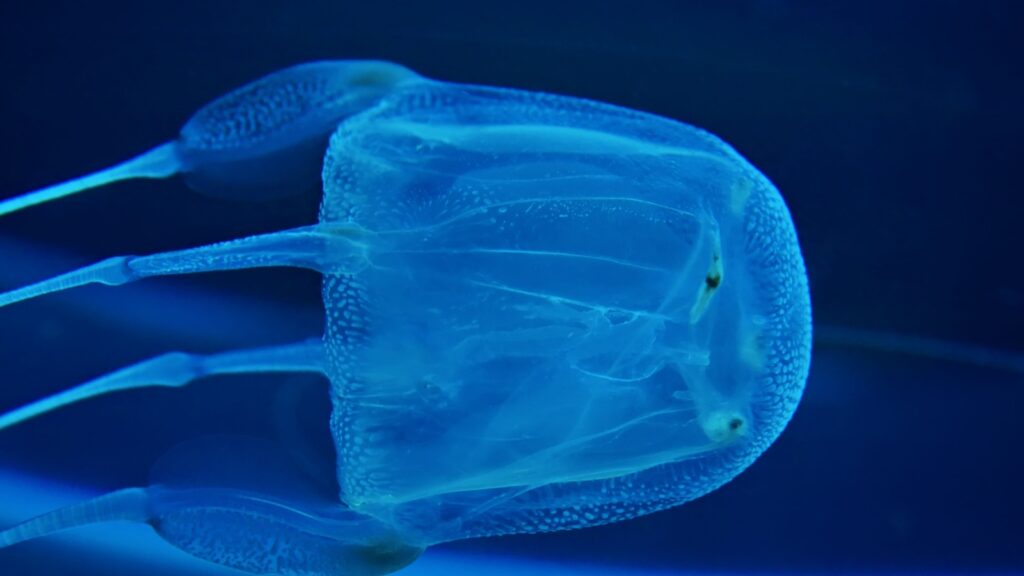The box jellyfish is one of the ocean’s most fascinating and deadly creatures. With its unique cube-shaped body and potent venom, this mysterious creature is simultaneously fascinating and alarming. I’ve always found box jellyfish to be weirdly wonderful beings. Seemingly so delicate yet with deadly venom and the ability to regenerate bodyparts. They really are remarkable.
A Cube-Shaped Wonder of the Sea
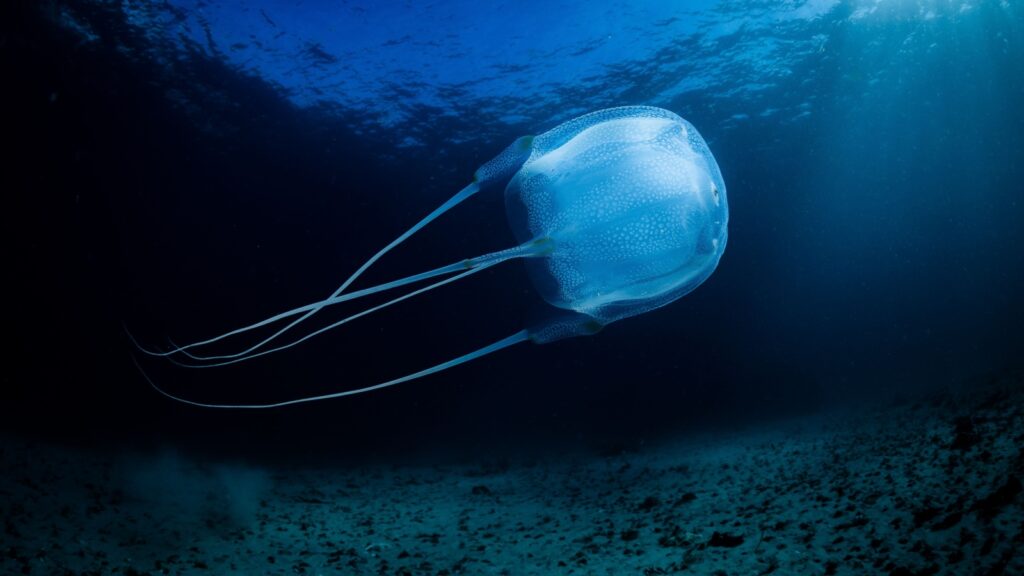
The box jellyfish gets its name from its distinctive cube-shaped bell. Unlike most jellyfish that have a round or umbrella-shaped body, the box jellyfish stands out with its boxy appearance. This unique shape allows it to move through the water with more control than other jellyfish species. The box jellyfish can actively swim, reaching speeds of up to four knots, rather than just drifting with the currents.
The Crown of 60 Deadly Tentacles

One of the most striking features of the box jellyfish is its array of tentacles. These jellyfish have up to 15 tentacles growing from each corner of their bell, totaling a whopping 60 tentacles. Each tentacle can grow up to 10 feet long, creating a dangerous web around the jellyfish. These tentacles are covered in millions of stinging cells called nematocysts, which the jellyfish uses to catch prey and defend itself.
A Jellyfish with 24 Eyes
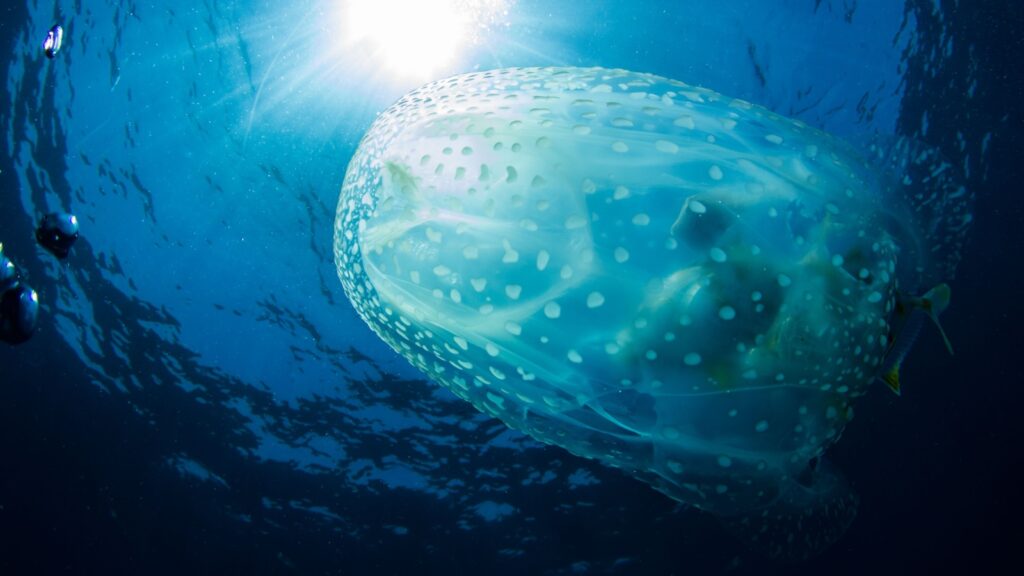
Perhaps the most surprising fact about box jellyfish is that they have 24 eyes, arranged in clusters of six on each side of their bell. This is a unique feature among cnidarians, the group that includes jellyfish and corals. These eyes are of different types, with some capable of forming images and others detecting light levels. This advanced visual system helps the box jellyfish navigate its environment and avoid obstacles.
The World’s Most Venomous Marine Animal

Box jellyfish hold the title of the most venomous marine animal on the planet. Their venom is a complex mixture of toxins that attack the heart, nervous system, and skin cells. A single sting from some species can cause cardiac arrest in humans within minutes. This potent venom helps the box jellyfish quickly immobilize its prey, which includes small fish and crustaceans.
A Short But Impactful Life Cycle

The life cycle of a box jellyfish is relatively short but fascinating. They typically live for only a few months, during which they grow rapidly and reproduce. Box jellyfish have separate sexes, and females carry their fertilized eggs in their tentacles. The eggs hatch into tiny larvae that settle on the ocean floor and develop into polyps. These polyps then transform into the adult medusa form, completing the cycle.
Masters of Camouflage
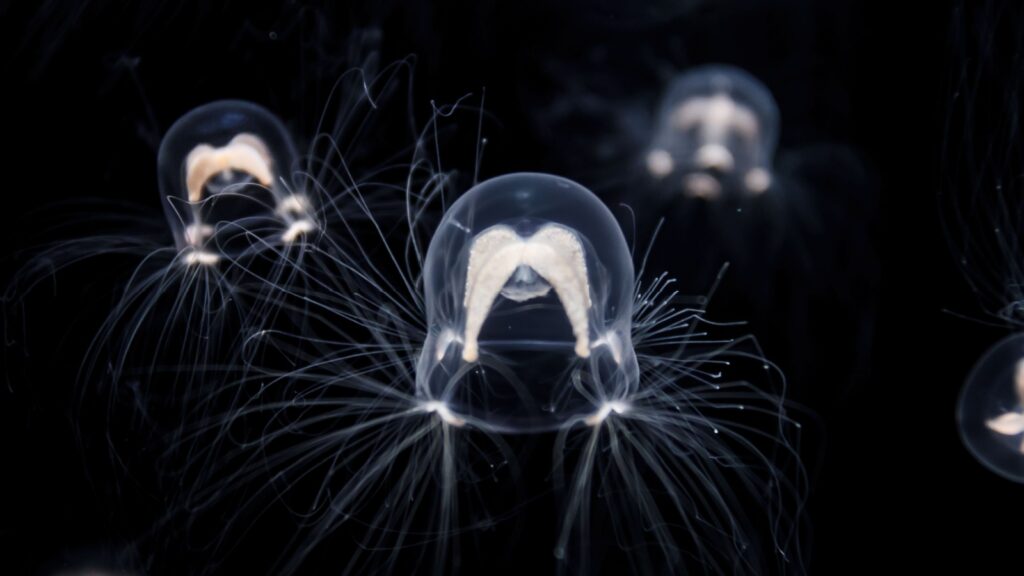
Despite their potent venom and unique features, box jellyfish are masters of camouflage. Their bodies are nearly transparent, making them difficult to spot in the water. This transparency helps them avoid predators and sneak up on prey. The only visible parts of the box jellyfish are often its tentacles, which can appear as thin, barely noticeable strands in the water.
A Diet of Fish and Crustaceans
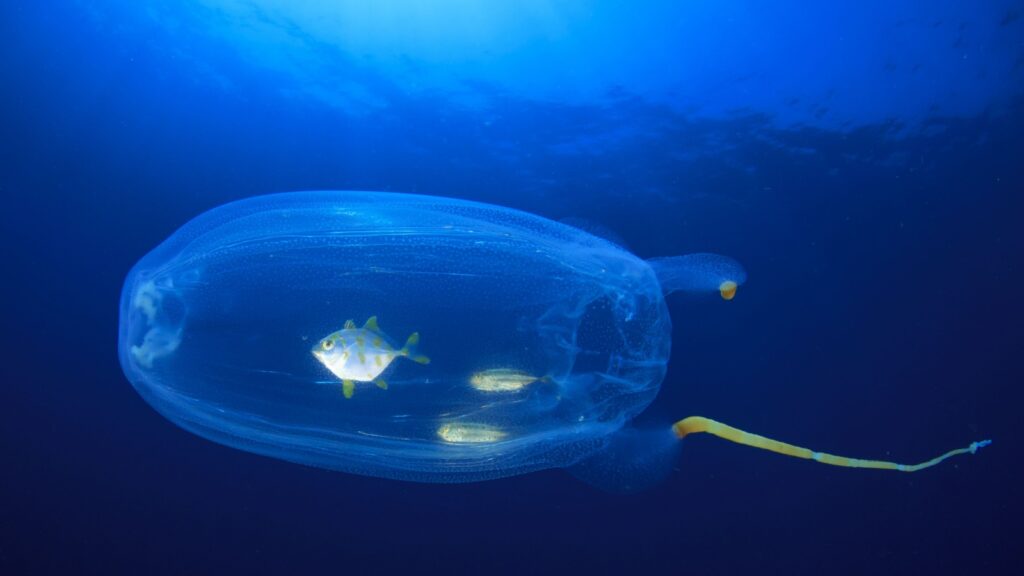
Box jellyfish are active predators with a diet consisting mainly of small fish and crustaceans. Their advanced eyesight and ability to swim actively allow them to hunt more efficiently than other jellyfish species. When prey comes into contact with their tentacles, the box jellyfish quickly paralyzes it with its venom and pulls it towards its mouth, located at the bottom of the bell.
Habitat in Warm Coastal Waters
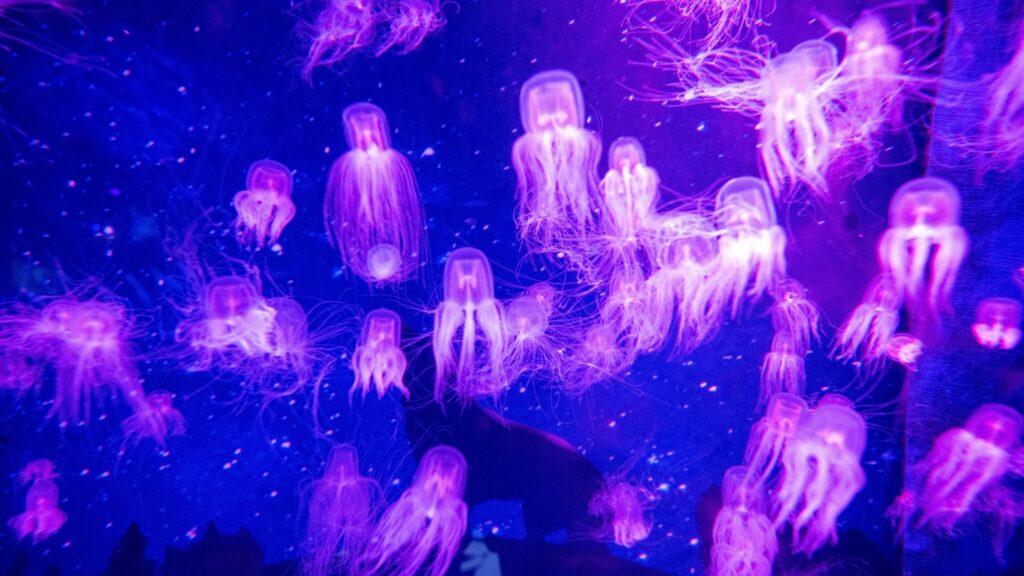
Box jellyfish are found primarily in the warm coastal waters of the Indo-Pacific region. They prefer shallow waters near the shore, often in areas with mangrove swamps or estuaries. Some species of box jellyfish are known to inhabit the waters around northern Australia, making these areas particularly dangerous for swimmers during certain times of the year.
A Complex Nervous System

Unlike many other jellyfish, box jellyfish possess a complex nervous system. This advanced neural network allows them to process information from their many eyes and respond quickly to their environment. Their ability to actively swim and avoid obstacles is a direct result of this sophisticated nervous system, setting them apart from their more primitive jellyfish relatives.
Seasonal Appearance in Coastal Areas
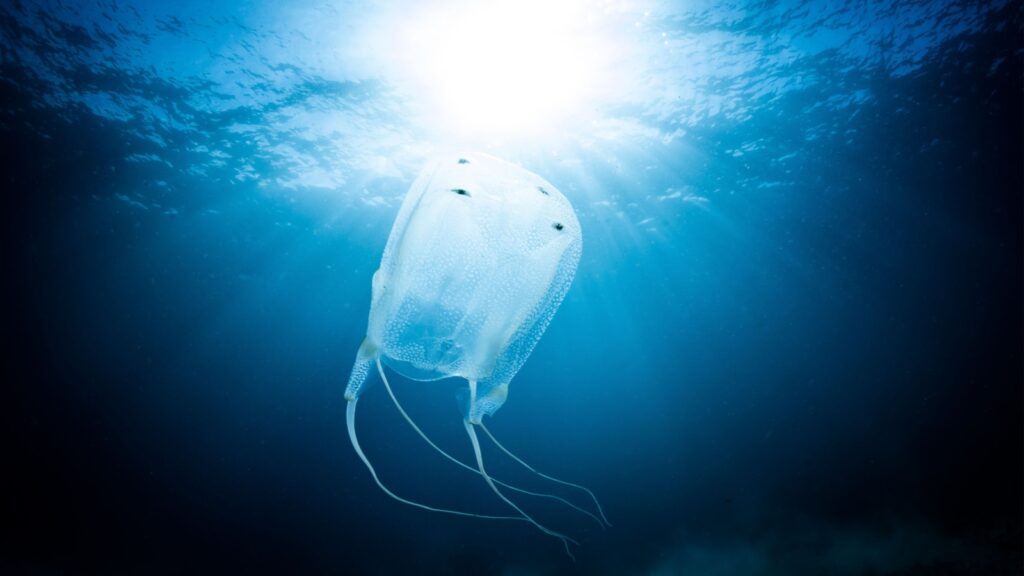
In many areas, box jellyfish appear in coastal waters seasonally. For example, in northern Australia, they are most common during the warmer months from October to May. This seasonal pattern is thought to be related to their breeding cycle and the availability of food. Understanding these patterns is crucial for managing the risk of encounters with these dangerous creatures.
Unique Mating Behavior
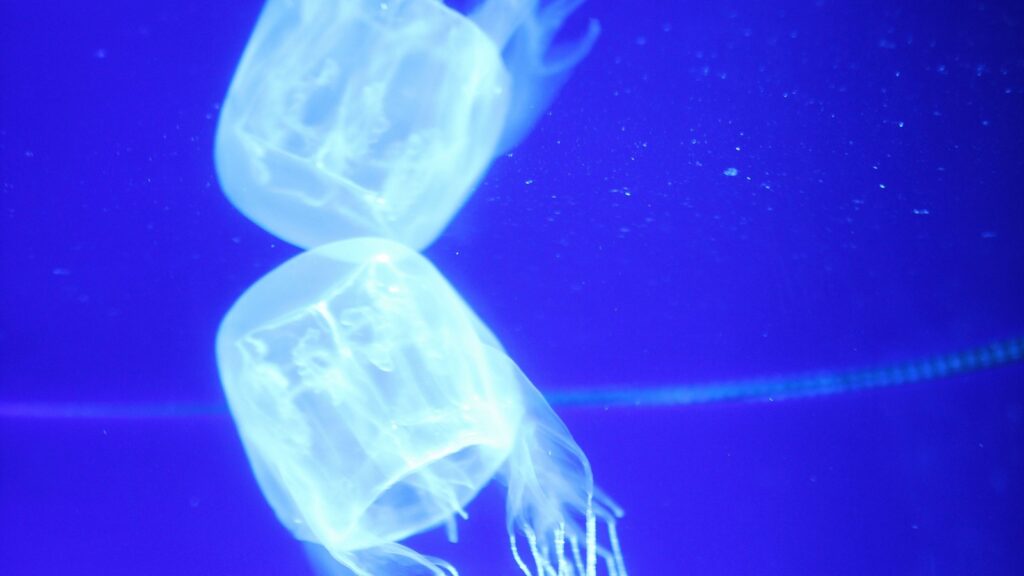
Box jellyfish exhibit interesting mating behaviors. During the breeding season, males release sperm into the water, which female jellyfish then collect to fertilize their eggs. Some species of box jellyfish have been observed engaging in courtship rituals, where males and females swim in synchronized patterns before mating. This level of complexity in mating behavior is unusual among jellyfish species.
Rapid Growth Rate
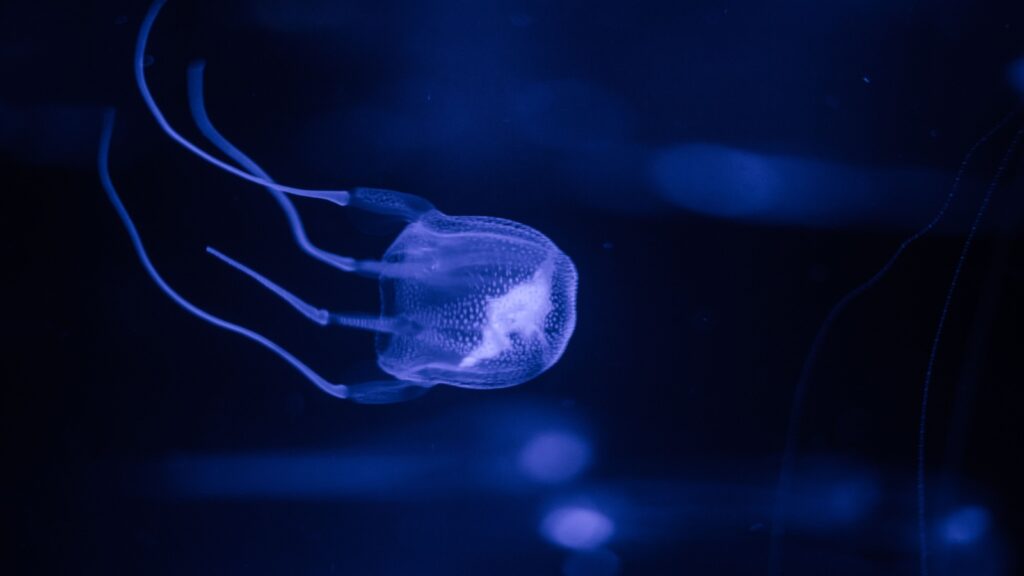
Box jellyfish have an impressive growth rate. They can grow from tiny polyps to full-sized adults in just a few months. This rapid growth allows them to reach sexual maturity quickly and reproduce within their short lifespan. The speed of their development is one of the reasons why their populations can increase rapidly under favorable conditions.
Ability to Regenerate Damaged Parts
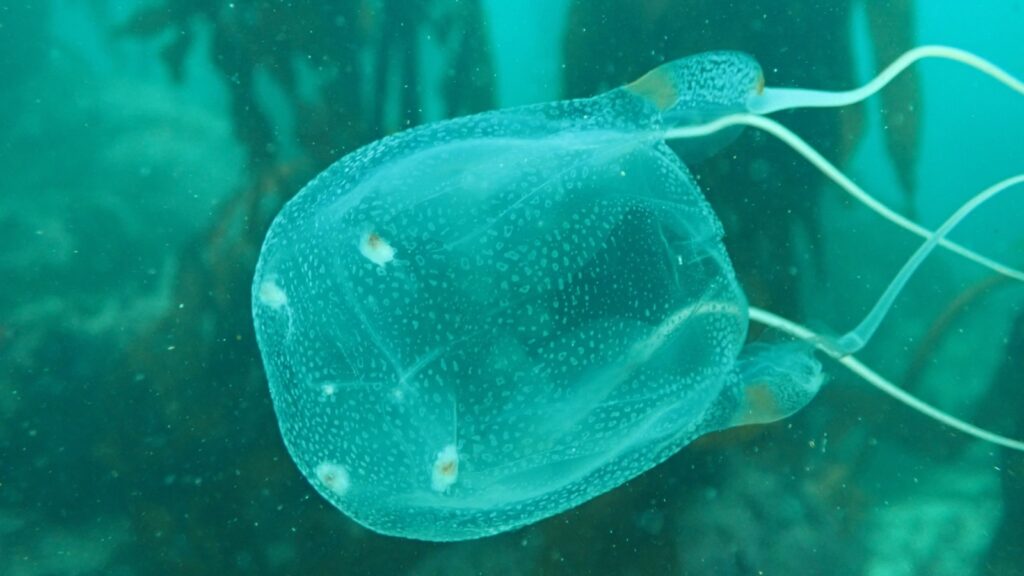
Like many other jellyfish species, box jellyfish have a remarkable ability to regenerate damaged parts of their body. If a tentacle is lost or damaged, they can regrow it relatively quickly. This regenerative ability helps them survive in the face of injuries from predators or environmental hazards, ensuring they can continue to hunt and reproduce effectively.
Unique Sleep Patterns
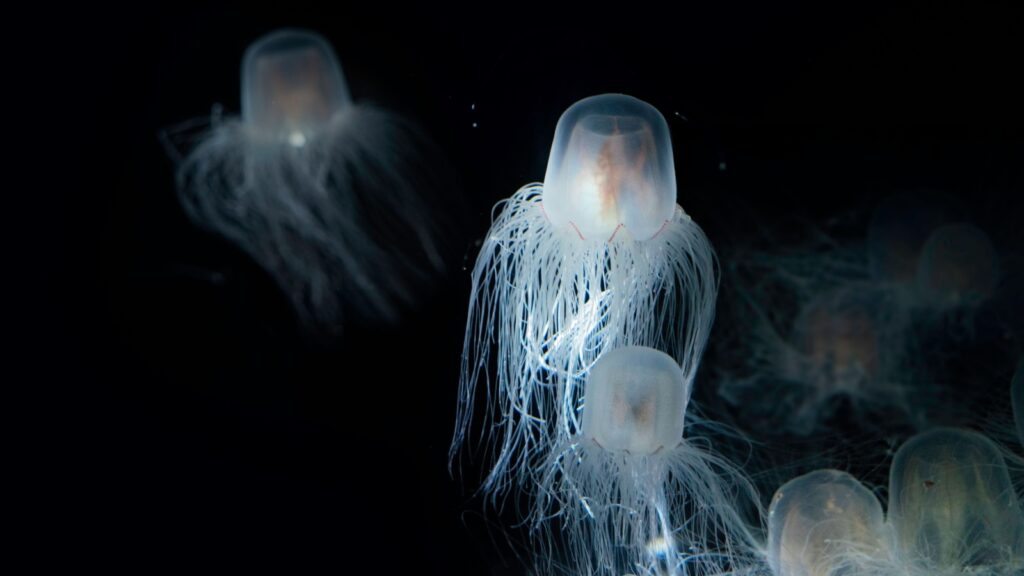
Unlike many other marine creatures, box jellyfish exhibit distinct sleep-like behavior. Researchers have observed that these jellyfish become less active and responsive during certain periods, typically at night. This behavior is similar to sleep in more complex animals. During these rest periods, the box jellyfish’s pulsing slows down, and they tend to sink towards the bottom of the water. This discovery challenges our understanding of sleep and suggests that even simple organisms without a centralized brain may need rest periods.
Incredible Hunting Precision
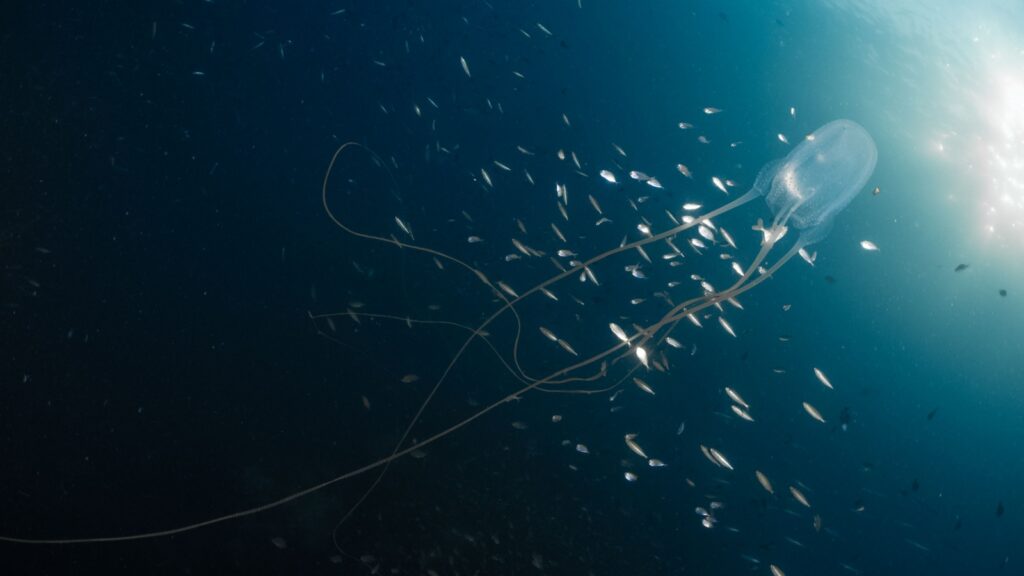
Box jellyfish are remarkably precise hunters, thanks to their advanced eyes and nervous system. They can actively pursue their prey, adjusting their course as needed. Their eyes allow them to detect the shadows of potential prey, and they can even gauge the size and distance of objects. This level of visual acuity is extraordinary for a creature without a brain in the traditional sense. When hunting, box jellyfish can rapidly change direction and speed, demonstrating a level of control that’s unusual among jellyfish species.

